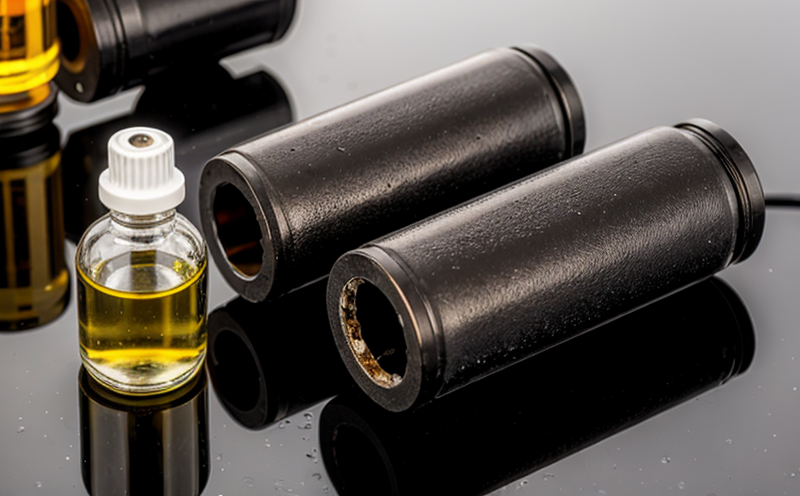ASTM D7679 Hydrocarbons Quantification GC MS Test in Water
The ASTM D7679 hydrocarbon quantification via gas chromatography–mass spectrometry (GC-MS) test is a critical tool for the water and wastewater testing sector. This method allows for the accurate determination of total petroleum hydrocarbons (TPH) and individual components in aqueous samples, which is essential for environmental monitoring, compliance with regulatory standards, and quality assurance.
The ASTM D7679 procedure involves several steps: first, a water sample is collected from the source under controlled conditions to ensure it represents the actual environment. The sample is then prepared by filtering out suspended solids, followed by extraction of hydrocarbons using either solvent or ultrasound-assisted methods. The extracted compounds are subsequently injected into a gas chromatograph for separation and identification.
The mass spectrometer in GC-MS provides precise molecular weights and fragmentation patterns that allow the identification of various hydrocarbon compounds present in the water sample. This capability is crucial as it helps differentiate between different types of hydrocarbons, such as alkanes, aromatics, and cycloalkanes, which have varying environmental impacts.
The acceptance criteria for ASTM D7679 are stringent to ensure accurate quantification. The method specifies precision within 15% relative standard deviation (RSD) at the limit of detection (LOD). This ensures that laboratories can reliably report hydrocarbon concentrations in water, even when they are very low.
In real-world applications, this test is used extensively by quality managers and compliance officers to ensure environmental standards are met. For R&D engineers, it serves as a valuable tool for developing new treatment processes or evaluating the effectiveness of existing ones. Procurement teams can use these results to assess the purity of water sources before they enter industrial processes.
The ASTM D7679 method is widely recognized and utilized in sectors such as petrochemicals, oil refineries, and wastewater treatment plants. It is particularly important for industries that discharge hydrocarbons into water bodies, ensuring that they comply with strict environmental regulations set by organizations like the Environmental Protection Agency (EPA).
Applied Standards
| Standard Code | Description |
|---|---|
| ASTM D7679-18 | Procedure for Determining the Concentrations of Total Hydrocarbons and Individual Components in Water by Gas Chromatography-Mass Spectrometry (GC-MS) |
| ISO 3049:2015 | Determination of petroleum hydrocarbons, total, in water—Part 1: Method using ultrasonic extraction |
The ASTM D7679-18 standard provides detailed protocols for the quantification of total hydrocarbons and individual components in water samples. This method is complemented by ISO 3049:2015, which offers an alternative approach using ultrasonic extraction. Both standards ensure that laboratories can achieve consistent and accurate results when performing these tests.
Benefits
- Precise quantification of total petroleum hydrocarbons (TPH) and individual components in water samples.
- Compliance with strict environmental regulations set by EPA and other international bodies.
- Rapid identification of various hydrocarbon compounds, aiding in the development of targeted treatment strategies.
The benefits of using ASTM D7679 GC-MS testing go beyond mere compliance. By providing detailed information on hydrocarbon content, laboratories can assist industries in identifying sources of contamination and implementing corrective measures. This data is invaluable for R&D teams looking to innovate or refine existing processes aimed at reducing environmental impact.
Competitive Advantage and Market Impact
- Leadership in providing accurate and reliable hydrocarbon quantification, ensuring compliance with stringent regulatory requirements.
- Support for industries facing increasing pressure to reduce environmental footprint by offering robust testing solutions.
The use of ASTM D7679 GC-MS test not only enhances a laboratory's reputation but also positions it as a key player in the water and wastewater sector. By offering comprehensive testing services, laboratories can differentiate themselves from competitors and establish long-term relationships with clients who value accuracy and reliability.





